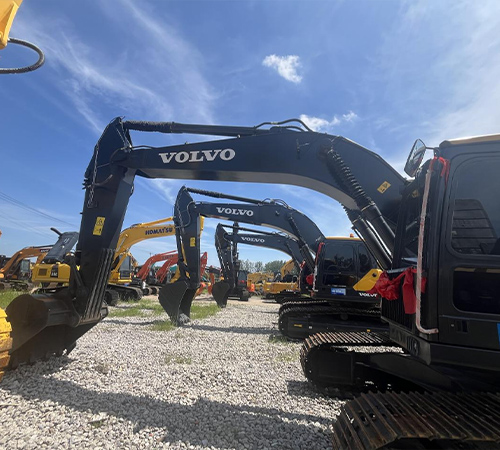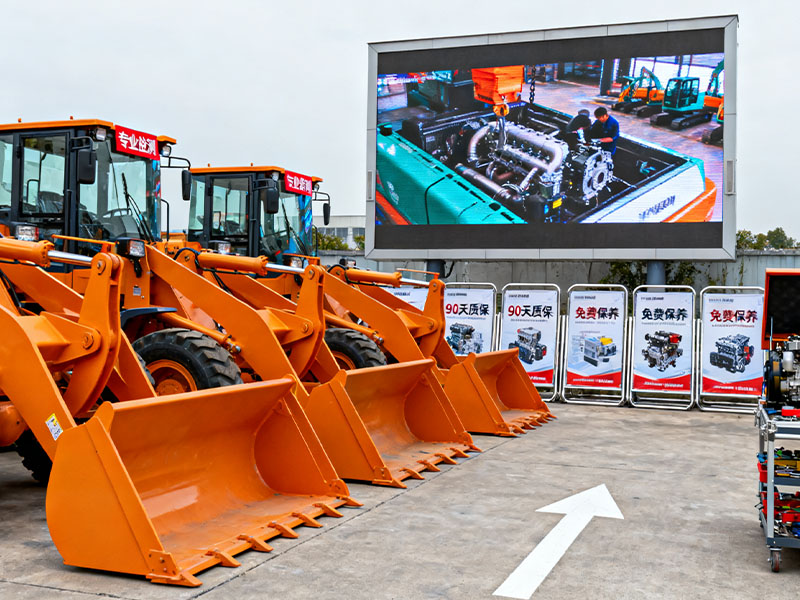China’s second-hand construction machinery market is showing increasingly significant advantages globally, and the core advantages of its brand resources are mainly reflected in the following aspects:
In general, the core advantages of China’s second-hand construction machinery brand resources are: relying on the world’s largest new machine market and massive inventory of equipment, it provides extremely competitive prices and rich choices. At the same time, the supporting industries are mature, forming a complete ecosystem with high cost-effectiveness and rapid response.
The following is a detailed breakdown:
1. Advantages of market inventory and brand richness
1. Huge market holdings:
· China is the world’s largest producer and consumer of construction machinery, and has accumulated a huge inventory of equipment over the years. This means that the second-hand market is extremely well supplied, with all kinds of machines ranging from common excavators and loaders to cranes, road rollers, forklifts, etc.
2. Rich brand matrix:
· Domestic brands dominate: Domestic leading brands represented by Sany, XCMG, Zoomlion, Liugong, etc., occupy an absolute dominant position in the second-hand market. These equipment are more in line with domestic working conditions and operating habits, and:
· Extremely cost-effective: Domestic equipment of the same tonnage and year usually has a much lower second-hand price than European and American brands.

Widespread availability of spare parts: The nationwide spare parts supply network ensures easy and low-cost access.
A wide variety of international brands: Komatsu, Caterpillar, Doosan, Hyundai, and other international brands have production bases in China, representing a significant market share. The used market offers both genuine imported equipment and cost-effective domestically produced models, catering to the needs of users at all levels.

- Price and Cost Advantages1. Attractive Purchasing Costs:
This is the core competitive advantage of used construction machinery in China. Due to fierce market competition and abundant supply, buyers can purchase equipment at prices far lower than those in the international market, resulting in a shorter return on investment.
2. Low Maintenance and Parts Costs:
· A Complete Parts Ecosystem: A highly mature and extensive supply chain for aftermarket and remanufactured parts has been established around leading domestic machine models. Parts prices are transparent and supply is plentiful.
· Proven Repair Technology: China boasts a large number of repair technicians familiar with equipment from various brands, particularly domestic brands, resulting in relatively low labor costs and fast technical support response times.

III. Advantages of the Industrial Chain and Supporting Services
1. Concentrated Trading Market:
China has developed several nationally renowned distribution centers for used construction machinery, such as Shenzhen Phoenix, Guangzhou Jiangfeng, Xuzhou, and Tianjin. These markets offer highly centralized information, making it extremely convenient to browse products, compare prices, and conduct transactions.
2. Active Online Trading Platforms:
Professional B2B/B2C platforms such as Tiejia.com, Paijitang, and Yibaitong have greatly improved information transparency and transaction efficiency. Buyers can browse vehicles nationwide online anytime, anywhere and obtain competitive prices through the platforms’ auction model.
3. Developing Remanufacturing and Refurbishment Capabilities:
Some large dealers and professional companies have begun systematically inspecting, repairing, and refurbishing recycled used equipment, even offering near-new warranty services. This enhances the reliability and value of used equipment.
4. Flexible Financial Services:
Financial services such as financing leases and mortgage loans for used construction machinery are becoming increasingly popular, lowering the barrier to entry for users.
- Main Target Markets and Application Scenarios: Based on the above advantages, used Chinese construction machinery is highly attractive in the following global markets:· Countries along the Belt and Road Initiative: Developing countries such as Southeast Asia, Africa, Central Asia, and the Middle East. These regions have strong demand for infrastructure construction but are highly price-sensitive. China’s cost-effective used equipment perfectly meets these needs.
· Domestic small and medium-sized construction companies and individual machine owners: For users with limited funds and undertaking small and medium-sized projects, purchasing used domestic equipment is the best option for starting a business and expanding production.
· Users with specific requirements for specific working conditions: For example, in areas with harsh working conditions and high equipment wear, using low-priced used equipment can effectively spread costs. Even if the equipment is scrapped, the core components still have residual value.
—
Challenges and Precautions:
While leveraging these advantages, we must also be aware of the challenges that exist:
1. Lack of transparency in vehicle condition: This is a common problem in the used equipment market. Issues such as tampering with the odometer and refurbishment to conceal faults are common, requiring buyers to have a certain level of identification skills or to consult third-party testing agencies.
2. Imperfect evaluation system: Although some evaluation standards exist, there is no unified and authoritative national valuation system, resulting in significant price fluctuations.
3. Emission Standard Restrictions: With tightening environmental regulations, the use and circulation of older equipment, such as those meeting National Emission Standards II and III, are restricted domestically. However, exporting these equipment to countries with lower standards remains an important outlet. 4.
Uneven After-Sales Service: Compared to new equipment, used equipment offers weaker after-sales guarantees, relying more on agreements between buyers and sellers or third-party service providers.
Conclusion:
China’s brand advantage in used construction machinery is structural and systemic. It stems not simply from affordability but rather from a vast inventory of equipment, established domestic brands, a comprehensive parts and service supply chain, and a highly developed trading ecosystem. For global buyers seeking exceptional value, fast delivery, and flexible investment, the Chinese market offers an irreplaceable and important option. By selecting reputable suppliers, leveraging third-party testing services, and utilizing formal financial channels, these advantages can be maximized and potential risks mitigated.













